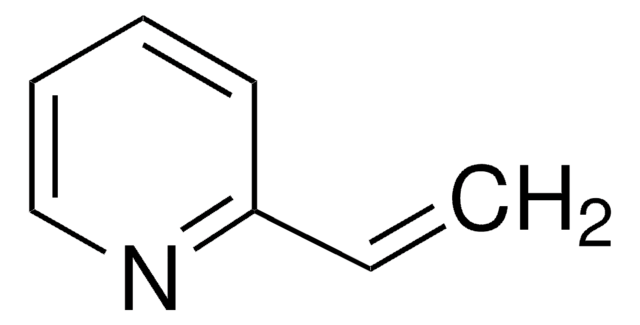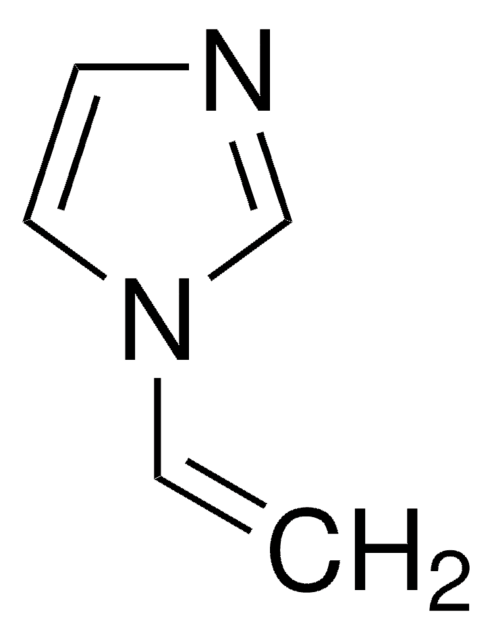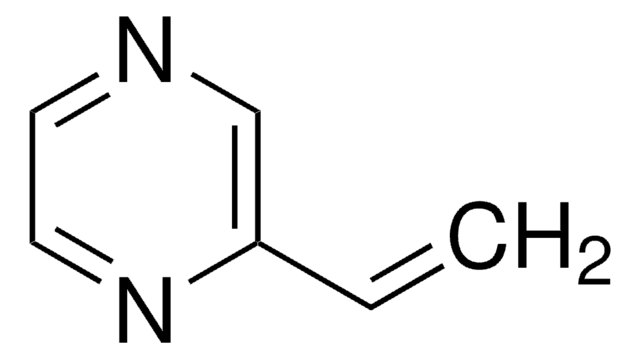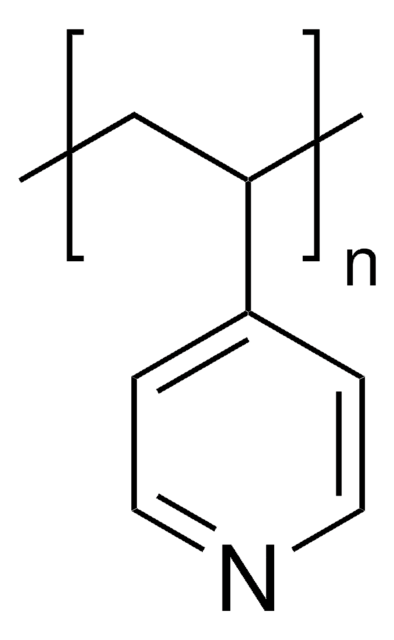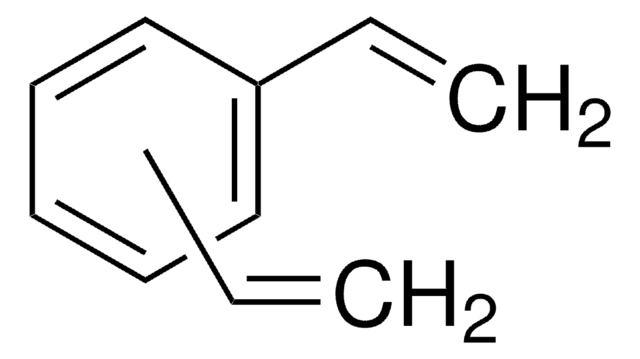V3204
4-Vinylpyridine
contains 100 ppm hydroquinone as inhibitor, 95%
Synonym(s):
4-Ethenylpyridine Pyridine
About This Item
Recommended Products
Assay
95%
contains
100 ppm hydroquinone as inhibitor
refractive index
n20/D 1.549 (lit.)
bp
62-65 °C/15 mmHg (lit.)
density
0.975 g/mL at 25 °C (lit.)
storage temp.
−20°C
SMILES string
C=Cc1ccncc1
InChI
1S/C7H7N/c1-2-7-3-5-8-6-4-7/h2-6H,1H2
InChI key
KFDVPJUYSDEJTH-UHFFFAOYSA-N
Looking for similar products? Visit Product Comparison Guide
Related Categories
General description
Application
- In the synthesis or modification of polymers for drug-releasing contact lenses.
- In the preparation of the zwitterionic polymer, namely poly(4-vinylpyridine propylsulfobetaine). The zwitterionic polymer is utilized for its superior bioinert capability in withstanding clinical sterilization processes, making it suitable for extended medical applications which include the development of biocompatible implants and as a coating material for medical devices.
- To synthesize the temperature and pH-sensitive copolymer, specifically (N-vinylcaprolactam-co-4-vinylpyridine), which is used in drug delivery systems under certain environmental conditions.
- The highly charged p(4-vinylpyridine-co-vinylimidazole) particles, which find applications in various fields such as biomedical, catalysis, and environmental applications.
Signal Word
Danger
Hazard Statements
Precautionary Statements
Hazard Classifications
Acute Tox. 3 Dermal - Acute Tox. 3 Inhalation - Acute Tox. 3 Oral - Aquatic Chronic 2 - Eye Dam. 1 - Flam. Liq. 3 - Skin Corr. 1B - Skin Sens. 1
Storage Class Code
3 - Flammable liquids
WGK
WGK 3
Flash Point(F)
125.0 °F - closed cup
Flash Point(C)
51.67 °C - closed cup
Personal Protective Equipment
Choose from one of the most recent versions:
Already Own This Product?
Find documentation for the products that you have recently purchased in the Document Library.
Articles
Atom transfer radical polymerization (ATRP) has emerged as one of the most successful synthetic techniques for the preparation of polymers with predetermined molecular weights, narrow molecular weight distributions, and high degrees of chain end functionalities.
Our team of scientists has experience in all areas of research including Life Science, Material Science, Chemical Synthesis, Chromatography, Analytical and many others.
Contact Technical Service